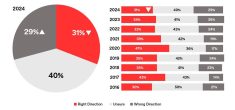Climate and food production is a subject that needs more study in coming years but for now even the U.S. Agriculture Department finds it almost impossible to estimate the effects of one on the other.
“They are very elaborate models,” said USDA’s chief economist Joseph Glauber.
“Take into account all the fundamentals on crops and yields. You also have to build in all this climate variability and predictions about climate variability. The range of potential outcomes is pretty large.
Read Also

Mazergroup’s Bob Mazer dies
Mazergroup’s Bob Mazer, who helped grow his family’s company into a string of farm equipment dealerships and the main dealer for New Holland machinery in Saskatchewan and Manitoba, died July 6 from cancer.
“We just don’t consider that in our 10-year baseline. We assume some trend growth, we really don’t even look at variabilities. That’s probably proper for a 10-year forecast horizon.”
The USDA’s crop reports, such as the monthly World Agricultural Supply and Demand Estimates and its 10-year baseline crop outlooks, are key benchmarks for the world food and farming industries, given the vast domestic and world data gathering the agency employs.
“To take our crop forecasting models – they are what they are – and try to marry in a lot of climate stuff, it’s pretty cumbersome,” Glauber said.
“Climate doesn’t make a difference much over 10 years. There is a lot more variability now relative to say 10, 15 years ago. But the real changes we are talking about here start manifesting themselves over 30, 40, 50 years.
“World food needs will increase by 70 per cent by 2050. By 2050, you can have climate issues. The important thing in looking at these longer-run forecasts is things like water availability. These are big stressors when you talk about food production needing to increase by 70 per cent.”
Climate change effects are already at work in many areas of the world, hurting yields in some areas while helping others, said David Fischhoff, vice-president of technology strategy at seed producer Monsanto.
“There may be near-term benefits from global warming in some regions of the world, for example the Nor thern Hemisphere,” Fischhoff said. “At the same time, the long-term trends indicate we will see more extreme weather patterns, more extreme droughts in parts of the world that are already dry including the southwestern U.S.


















